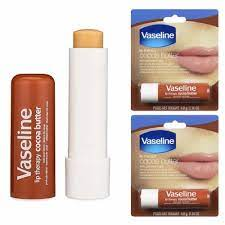- Classification of Vaseline
Based on its uses, petroleum jelly may be roughly classified into three categories: industrial, cosmetic, and medicinal.
i. Medical Vaseline
Because of its occlusive qualities, which form a barrier to protect the skin from moisture loss and promote healing, petroleum jelly is frequently utilized in the medical sector. It is frequently used to keep small wounds, burns, and abrasions wet and free of infection and aids in the healing process. The research “Clinical reliability and cost analysis of using petroleum jelly creams versus water-based gels for urethral catheterization” compares the cost and effectiveness of petroleum jelly with water-based gels for urethral catheterization, highlighting its application in a clinical environment. The study’s conclusion that petroleum jelly may be applied successfully in these kinds of treatments highlights the substance’s adaptability in medical settings.
The treatment of heel fissures is another medical use, as evidenced by a research comparing the effects of petroleum jelly and coconut oil on young women’s heel fissures. The moisturizing qualities of petroleum jelly aid in the treatment of dry, cracked skin, a frequent podiatric ailment.
ii. Cosmestic Vaseline:
Cosmetic Vaseline’s moisturizing qualities are why it’s employed in the beauty and cosmetics industries. Hand creams, lip balms, and other skincare items frequently include it. It serves as a basis for cosmetic items and moisturizes dry lips and face, it’s occlusive properties assist to trap moisture, making it a useful treatment for dry skin. Despite the fact that petroleum jelly is usually regarded as safe for cosmetic usage, allergic responses can occasionally occur, as demonstrated by the instance of allergic contact cheilitis brought on by white petroleum jelly. This emphasizes the need of customers with sensitive skin or allergies exercising caution and awareness.

Figure 1: Vaseline Lip balm product
iii. Industrial Vaseline
Petroleum jelly is also used in a variety of industrial contexts. It is employed in the production of several goods, including polishes and candles, as well as lubricants and rust-preventive coatings. The characterisation of petroleum waxes, which are closely linked to petroleum jelly, for application in the food industry as coatings and texture enhancers is covered in the paper “Rapid Classification of Petroleum Waxes: A Vis-NIR Spectroscopy and Machine Learning Approach”.
Furthermore, the potential of petroleum jelly as a viscosity modifier and stabilizer in commercial formulations is demonstrated by the rheological properties of petroleum jelly formulations incorporating organically modified layered double hydroxides. This demonstrates how petroleum jelly may be used to improve the qualities of items in which it is integrated. Although industrial Vaseline is not meant for use in medicine or cosmetics, it has many of the same qualities.
- Properties of Vaseline
Determining the quality and uses of petroleum jelly requires an understanding of its qualities. One of petroleum jelly’s most crucial characteristics is its color; its whiteness indicates its superior quality and thorough purification. The amount of heavy metals, sulfated ash, and polycyclic aromatic hydrocarbons (PAHs) in petroleum jelly also indicates its quality.
Other physical characteristics that vary depending on the producer of petroleum jelly include its viscosity, density, and melting point. The congealing point and penetration are also included in the petroleum jelly specification table.
The highest temperature at which petroleum jelly starts to semi-solidify from a liquid condition is known as the congealing point. Furthermore, petroleum jelly’s penetration shows how soft it is at room temperature. The chemical characteristics of petroleum jelly that control its volatility and reactivity are its flash point, acidity, and alkalinity, in that order.
Reference
Caniklioğlu, M., Öztekin, Ü., Sarı, S., Selmi, V., Gürtan, E., & Işıkay, L. (2021). Clinical reliability and cost analysis of using petroleum jelly creams versus water-based gels for urethral catheterization.
K, S., Venkata Ramana, V., & Srinivasa Rao, R. (2023). ALLERGIC CONTACT CHEILITIS OF BOTH LIPS CAUSED BY WHITE PETROLEUM JELLY. GLOBAL JOURNAL FOR RESEARCH ANALYSIS.
Barea-Sepúlveda M, Calle JLP, Ferreiro-González M, Palma M. Rapid Classification of Petroleum Waxes: A Vis-NIR Spectroscopy and Machine Learning Approach. Foods. 2023 Sep 7;12(18):3362. doi: 10.3390/foods12183362. PMID: 37761070; PMCID: PMC10528079.
Mosangi, D., Pillai, S.K., Moyo, L., & Ray, S.S. (2018). RHEOLOGICAL CHARACTERISTICS OF PETROLEUM JELLY FORMULATIONS CONTAINING ORGANICALLY MODIFIED LAYERED DOUBLE HYDROXIDES.
Petroleum Jelly or Vaseline: Everything You Need to Know; Available on: https://infinitygalaxy.org/what-is-petroleum-jelly-or-vaseline/
